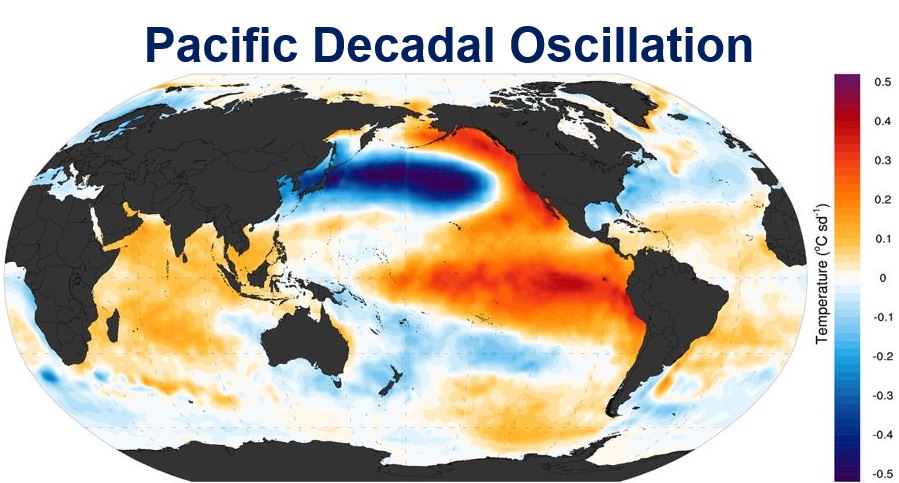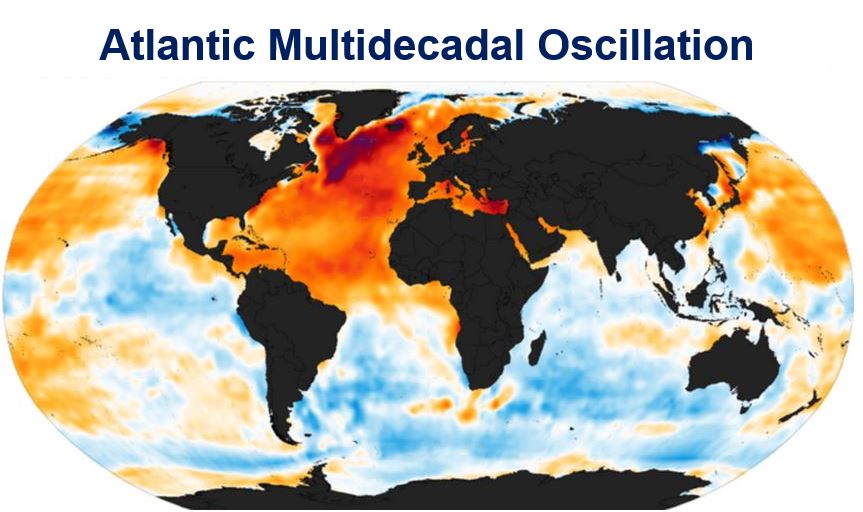Global warming’s stationary trend, which was reported by the Intergovernmental Panel on Climate Change (IPCC) two years ago, is set to end, as the cooler Pacific Ocean, which provided a “false pause”, warms up again, researchers have discovered.
When the IPCC said global warming had halted, many skeptics cited that statement to accuse scientists of creating an elaborate human-activity-induced climate change hoax.
Scientists from the University of Minnesota Duluth and Pennsylvania State University (Penn State) wrote in the academic journal Science that global warming is caused by human activity, it is real, it has been halted by the Pacific Ocean going through a cooler period, and will soon gather pace as it heats up again.

The Pacific Ocean during its “warm” period. (Image: Wikimediacommons)
Penn State Professor Michael Mann and colleagues explained that there are natural oscillations in the climate, and that the pendulum is about to swing the other way.
They insisted that these weather swings represent “variability to the internal climate system.” The recent warming slowdown, such as it was, is definitely no reason not to worry, they added.
Professor Mann explained:
“We know that it is important to distinguish between human-caused and natural climate variability so we can assess the impact of human-caused climate change on a variety of phenomena including drought and weather extremes.”
“The North Atlantic and North Pacific oceans appear to be drivers of substantial natural, internal climate variability on timescales of decades.”
Prof. Mann, Prof. Byron Steinman, also of Penn State, and researcher Sonya Miller, of the University of Minnesota-Duluth, gathered and analyzed information from a combination of model simulations and real-world observational data to find out what factors may have contributed to climate fluctuations in the Northern Hemisphere.

Atlantic Multidecadal Oscillation spacial pattern. (Image source: Penn State)
Atlantic and Pacific Ocean oscillations
The Atlantic Multidecadal Oscillation, known by its acronym AMO, shows the fluctuations in sea-surface temperatures in the North Atlantic over a 50 to 70 year period.
The Pacific Ocean equivalent is called PDO (Pacific Decadal Oscillation). As PDO covers a much longer period, the scientists focused on the multidecadal portion of it, i.e. the PMO (Pacific Multidecadal Oscillation).
After carrying out several simulations, the researchers saw that PMO and AMO are not closely correlated – they are not, as some climatologists had claimed, part of a global “stadium wave” oscillation.
Cooler Pacific Ocean gave global warming a “false pause”
The team found that warming in the Northern Hemisphere has slowed down significantly recently, because the Pacific Ocean had cooled sharply. As AMO was comparatively flat, they concluded that Atlantic Ocean temperatures had nothing to do with the climate warming slowdown.
In other words, the world had experienced a “false pause” because the Pacific Ocean had become colder.
They believe the falling temperatures in the Pacific Ocean and the slowdown in climate warming over the past ten years are linked to heat buried deep down in the tropical Pacific and a tendency for sustained La Niña type conditions.
La Niña, which is characterized by unusually cool ocean temperatures in the equatorial region of the Pacific Ocean, is the opposite of El Niño.
The authors wrote:
“While there is paleoclimate data suggesting that this type of response could come from subtle features of climate change itself that climate models do not currently capture, the researchers note that the most likely explanation is the random excursions of the AMO.”
Prof. Mann commented:
“Our findings have strong implications for the attribution of recent climate changes. Internal multidecadal variability in Northern Hemisphere temperatures likely offset anthropogenic warming over the past decade.”
The scientists are certain the Pacific Ocean’s cooler period is about to swing the other way. When it heats up again, global warming will evolve at a much faster rate.
In an Abstract in the journal, the authors concluded:
“Competition between a modest positive peak in the AMO and a substantially negative-trending PMO are seen to produce a slowdown or ‘false pause’ in warming of the past decade.”
The pause may already be over. Last year was the hottest on record, according to NOAA (National Oceanic and Atmospheric Administration) data.
